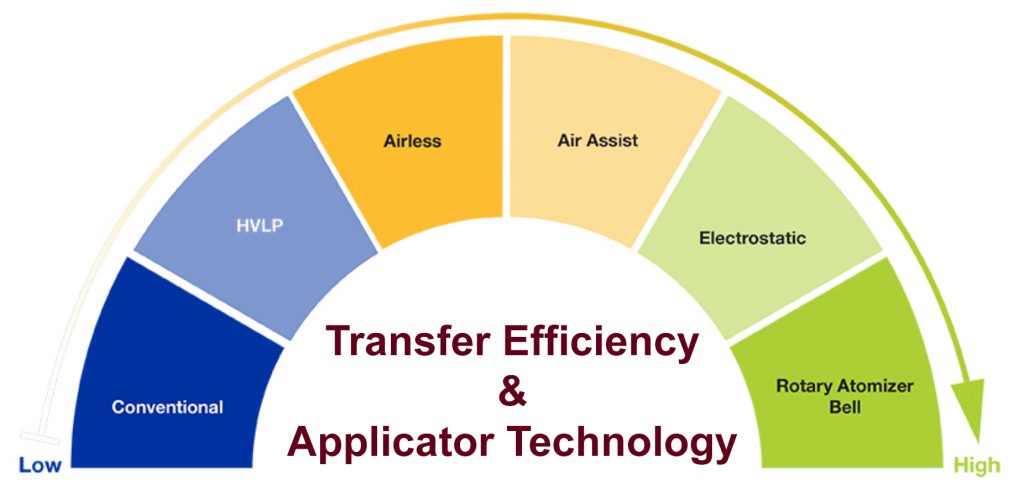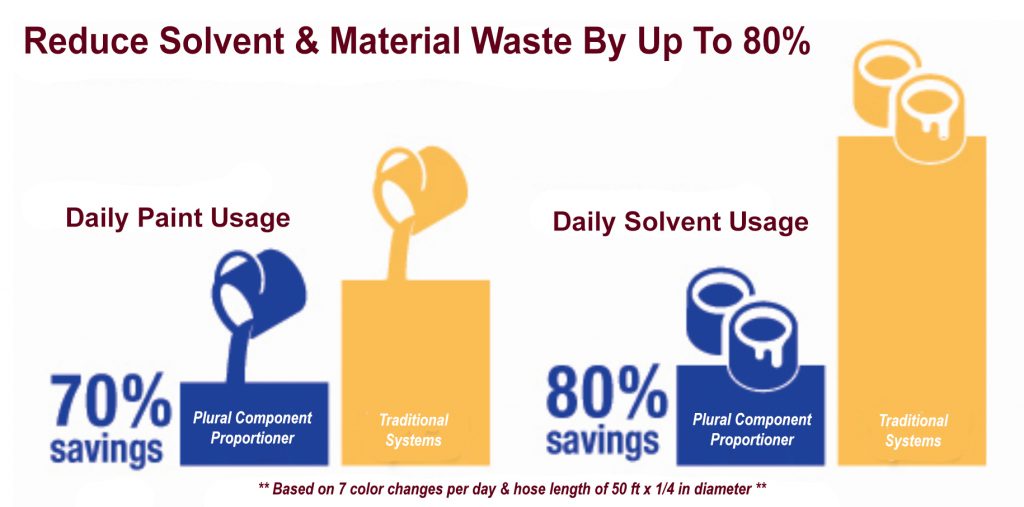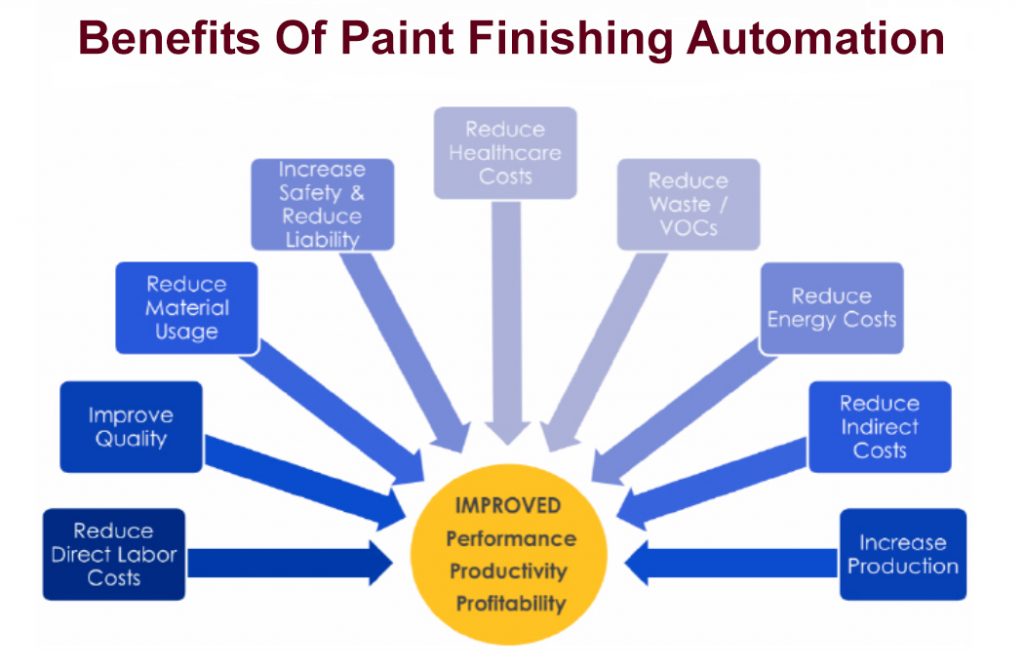March 24, 2017
3 Steps to Reducing VOCs in Manufacturing
SHARE THIS POST
What are VOCs you ask? Volatile Organic Compounds (VOCs) are the carbon-based solvents that give traditional paints their obnoxious aroma. The U.S. Environmental Protection Agency (EPA) concluded that some VOCs are suspected carcinogens; a substance or agent that causes cancer. Additionally, VOCs in these traditional paints account for 2-4% of existing ozone-depleting substances in the United States. Because of these serious health and environmental effects, VOCs have been and continue to be heavily regulated, especially in industrial painting applications. These regulations vary from state-to-state and are often times confusing, but they all start with manufacturers reducing their carbon footprint.
Step One: Increase your paint transfer efficiencies. Simply put, this means reduce the amount of paint you spray at your target. How much material sprays past the part your are painting and gets wasted into your booth? If manufacturers increase their paint transfer efficiencies, they will see a decrease in released VOCs as well as improved booth filter life. Transfer efficiencies increase with the use of new technologies. By maximizing transfer efficiency and spraying less paint, manufacturers not only save money in material costs, but also save in maintenance costs, time, clean-up, increase filter life, and decrease VOC emissions.
Step Two: Control the amount of solvent you use. Accurate mixing and ratio assurance can greatly reduce the amount of solvent used in your finishing process. Ensure that your materials are mixed on-demand at the correct ratio for optimal performance and increased cost savings. Advances in equipment technologies, like plural component proportioners, allow materials to be mixed closer to the gun; resulting in up to an 80% reduction in flushing waste, as well as faster color changes. Design features like this warrant that your material is accurately mixed before it is sprayed; saving you time, lowering your VOC expenses, and reducing wasted product.
Step Three: Automate your paint line. Automation trends are on the rise, especially in industrial painting. Automation can reduce material consumption by up to 30% because of the accuracy of robotics; especially when paired with technologically advanced equipment like plural component proportioners and automatic electrostatic spray guns. Manufacturers have way more control over their finishing processes and can ensure the spray parameters are exactly the same every single time; increasing product quality and consistency while reducing material costs, VOC emissions, and safeguarding worker health.
To learn more about how to reduce Volatile Organic Compounds in your paint finishing process, contact C.H. Reed, Inc. to speak with a Finishing Specialist and schedule a free system analysis today!
Source: “3 Steps to Reduce Your VOCs.” 3 Steps to Reduce VOCs in Paint | Graco. N.p., n.d. Web. 24 Mar. 2017.
http://www.graco.com/us/en/products/manufacturing/automation/3-steps-to-reduce-your-vocs.html
Search
Categories
Get a consultation
Related Posts
The 3 Distinct Advantages of Hydraulic Powered Pumps
Recently, C. H. Reed helped a major printing operation install a new ink pumping system. The new system needed to transfer four colors of high viscosity, heat-set ink to their three presses, drawing the ink from multiple 5,000…
Simple Ways to Reduce Waste in Your Spray Finishing System
In today’s demanding manufacturing landscape, it can be convenient to adopt a “cut-costs-at-all-costs” mentality, justifying questionable means for the sake of leaner production, a lower bottom line and increased profitability. Regrettably, those efforts can interfere…
What You Need to Know About Air-Powered Pressure Washers
Pressure washers are great solutions for your average cleaning applications, but what tool do you turn to for your more challenging applications? There are many instances where it is simply impossible to use a traditional…


